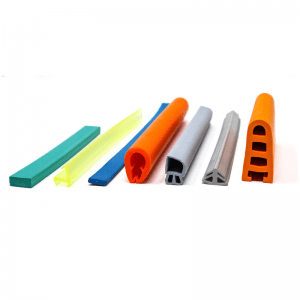 Acoustic and thermal insulation won’t stop an IED attack, but it’s still mission-critical. Learn about acoustic foams and thermal management materials, and how Elasto Proxy custom-fabricates insulation sandwiches that protect engines and soldiers against noise, heat, and vibrations.
Acoustic and thermal insulation won’t stop an IED attack, but it’s still mission-critical. Learn about acoustic foams and thermal management materials, and how Elasto Proxy custom-fabricates insulation sandwiches that protect engines and soldiers against noise, heat, and vibrations.
Clyde Sharpe
General Manager at Elasto Proxy
Military machines like the MRAP are designed to project power while protecting personnel. With their V-shaped hulls and add-on armor, the mine resistant ambush protected (MRAP) vehicle can withstand IEDs, mines, RPG rounds, and small arms fire. Ballistic protection alone won’t keep armored vehicles on patrol, however. The MRAP is powered by a big diesel engine that runs hot and loud. Without engine bay insulation, heat and noise could put both the powerplant and military personnel at risk.
Engine Bay Insulation for Armored Vehicles
Acoustic and thermal insulation isn’t as strong as armor plating, but that doesn’t mean vehicle designers have to choose materials that aren’t ready to deploy. No, engine bay insulation isn’t bulletproof; however, stopping shrapnel isn’t the objective. Instead, acoustic insulation is designed to dampen or even absorb sounds from the engine that would otherwise spread to the vehicle’s interior. Similarly, thermal insulation is designed to absorb heat from the engine compartment and deflect it away from the cab.
Sound Absorption and Thermal Management
Let’s take a look at both types of insulation in greater detail, and examine some of the sound and heat absorbing materials that are used. We’ll also address a few vehicle design questions. For example, what if you need both acoustic and thermal insulation? For that matter, what if you also need vibration damping materials to reduce resonance and resulting sounds? By using sandwich-like structures of multiple materials, engine bay insulation can provide protection against sound, heat, and vibrations.
Acoustical Insulation for Sound Reduction
Sound absorbing insulation is made of lightweight, open-cell acoustical foams that may also offer resistance to fire, water, moisture, and extreme temperatures. Elastomeric materials such as urethane, polyurethane, polyester, and hydrophobic melamine are used and may meet flame, smoke, and toxicity (FST) standards. Typically, acoustic foam insulation is supplied in thick sheets and then cut to size. Film facings and pressure sensitive adhesives promote installation on the assembly line or even in the field.
Thermal Insulation for High-Temperature Environments
Heat management materials include melamine and polyimide foams, aluminum foil-faced fiberglass fabric composites, and closed-cell custom thermal insulation that’s designed to stop the propagation of flame and smoke. As with acoustic insulation, these thermal insulators are supplied in thick sheets and then cut to size. Fireproof rubber that meets FST standards is available, and some thermal management materials reflect significant amounts of radiant heat while also providing a vapor barrier.
Meeting Military Standards
If you’re a vehicle designer or a technical buyer, choosing the right materials for thermal and acoustic insulation can also mean meeting military requirements. For example, the U.S. Department of Defense recently released a new standard, MIL-STD-1474E, that specifies the maximum permissible noise levels produced by military systems. In addition to supporting speech communications in noisy environments, MIL-STD-1474E seeks to minimize the risk of permanent noise-induced hearing loss.
Insulation Sandwiches for Noise, Heat, and Vibration
Compound selection is important, but insulating an engine bay may require multiple materials. By building sandwich-like structures that include not just foams and foil-faced fabrics but also fillers, adhesives, and barrier materials, Elasto Proxy can create custom insulation that provides protection against noise, heat, and vibration. With our water jet cutting and taping capabilities, Elasto Proxy cost-effectively cuts insulating materials to size, assembles them, and then delivers solutions that are ready-to-install.
Visit Elasto Proxy at CANSEC (Booth #935) | Two Informational Sessions
Do you have questions about acoustic or thermal insulation for military vehicles? Would you like to learn more about “insulation sandwiches” that are effective, efficient, and easy-to-install? If you’re headed to CANEC 2015, visit Elasto Proxy in Booth #935 on May 27 or May 28 in Ottawa. Email me to arrange a meeting, and enjoy this short video about custom insulation. It reiterates the main points of this article, so please share it with your defense industry colleagues.









